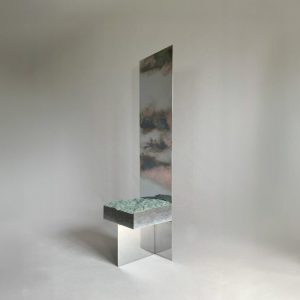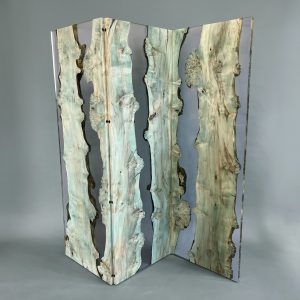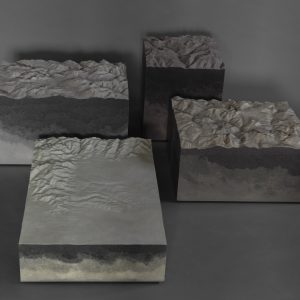WETLAND Console
Geomorphic 2023
/ Consoles
The story behind
A wetland is a planetary ecosystem that is saturated with water, which in some cases preserves organic materials – such as wood – for millennia.
We can find some types of fossil wood deposits also in some areas of the Alps, often subject to large-scale floodings. The trees, dragged and deposited in the riverbed by the force of the water, are buried by layers of gravel and sand. The long-time storage under low oxygen levels has started a genuine semi-fossilization process, still influenced by the substances present in the water. Currents bind the minerals and iron in the water with tannins in the wood, naturally colouring the wood in the process. This gives its uniqueness: the colours of a trunk can change from golden to black and the veining can create drawings through the chromatic scales. The color will create warm shades in contact with clay, cold ones in contact with gravel. The tendency of wood to become darker indicates the increasing age of the trunks. Some of them have more than 8000 years, others have hundreds years.
Our current fossil wood is an ancient species of Oak, it dates back to the 5th century BC (radiocarbon dating) and finally comes to light through a careful and complex work of recovery and drying processing.
Like the water over millennia, alcarol’s transparent resin surrounds the organic shapes of this unique wood, preserving and enhancing all its preciousness and charm.
The natural wood surface it’s not covered by resin on the section planes, so you can touch the energy still vibrating in this ancient material.
A transparent vertical pillar pierces and supports the wood in a seemingly antigravity mode that plays with optical prism effects, hiding the fastening system in what appears to be an extraclear pillar full of reflected light.
YEAR OF PRESENTATION : Milano Design Week 2023 at SUPERSTUDIO
Dimensions
178 x 50 x H 85 cm
Materials
Fossil OAK Wood (dates back to the 5th century BC, radiocarbon dating), Extraclear Polished RESIN























